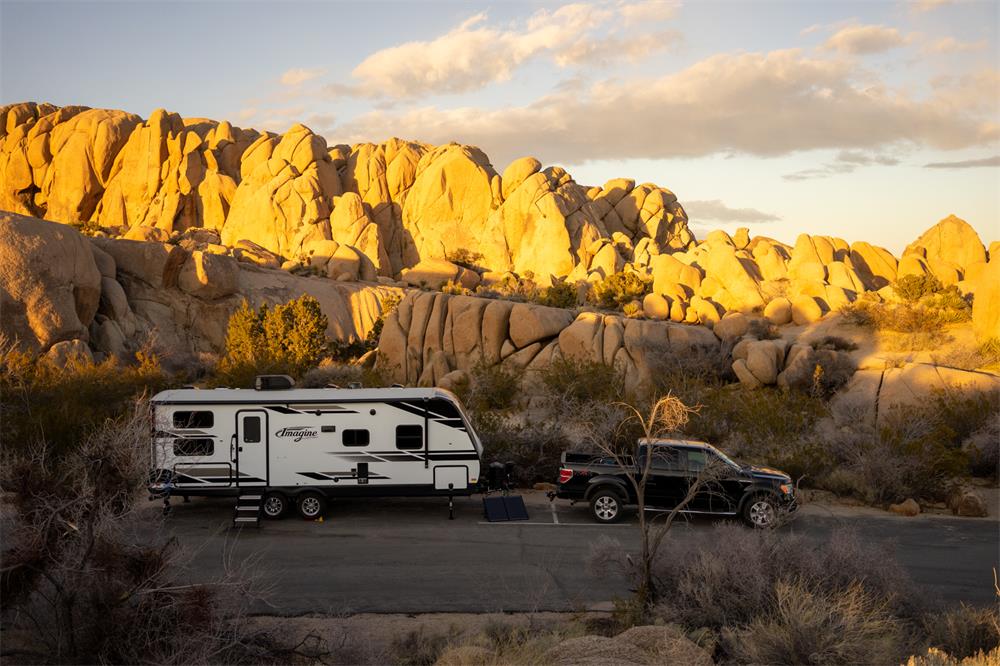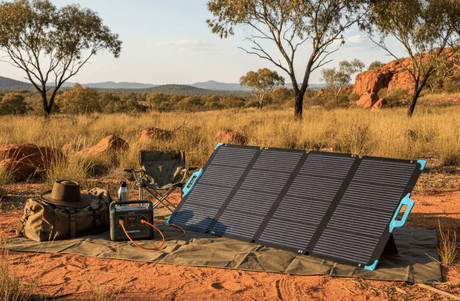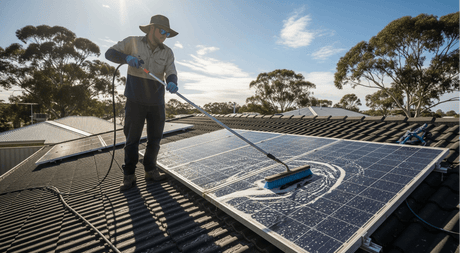You may remember learning about the relationship between the Earth and the Sun in your primary school years, but do you remember studying average peak sun hours? Probably not. That doesn’t mean your teacher didn’t teach you about them, but it’s one of those things that may not have had much of an impact on you at the time.
As time and technology have advanced, a concept like average peak sun hours has become more relevant to our everyday lives due to the popularity of solar panels. This renewable energy source allows us to harness power from the sun and, with the help of charge controllers, inverters, and batteries, store and use that solar power only when we need it.
So just what does the term “average peak sun hours” mean, and how do we measure it? Let’s shine some light on this valuable phrase and see how it applies to each Australian state or territory.
What Is a Peak Sun Hour?
In simple terms, a peak sun hour is that time of day when you’re outside working on your tan, or you’re avoiding the sun at all costs because it’s so intense. In other words, during the course of an hour, the intensity of sunlight is strong enough to reach 1,000 watts of energy per square meter. This strength most commonly occurs when the sun is highest in the sky, often between 10 a.m. and 3 p.m.
Sometimes we refer to peak sun hours as peak sunlight hours, and the number of peak sun hours naturally varies from place to place and from day to day. That’s why if you’re considering solar panel installation for your home, it’s imperative to know your location’s average peak sun hours.
Using Average Peak Sun Hours
It’s essential to ensure you choose the right solar energy system for your home’s needs based on average peak sun hours. However, it’s also helpful to realise that scientists who test and rate solar panel output use the same solar radiation measurement of 1,000 watts of energy per square meter. That means if solar panel systems produce 300 watts, they’re referring to their energy production during times of peak sun hours, not all hours.
How Peak Sun Hours Measure Sunlight
The hours of sunlight a specific location on Earth receives are dependent on several factors, such as 1) what time of year or season it is at those coordinates and 2) what the weather is like that day. This information is the type of thing you learned about way back when in Science class, like how the Earth rotated and revolved around the Sun, giving us day and night as well as the four seasons (although in some parts of Australia there are really only two seasons: wet and dry).
So what does all of this have to do with hours of daylight? Well, to determine your Australian location’s average peak sun hours for solar energy purposes, you’ve got to do some maths (that’s right, we’re back in school again!). Thankfully it’s a fairly straightforward process.
Because scientists measure a peak sun hour as that timeframe when the sun’s intensity is at least 1,000 watts per square meter, or 1000 W/m², that’s what you need to use to know which solar panel kits or portable solar generators will work best in your location.
For instance, perhaps a certain location receives 500 W/m² of sunlight energy from 9 a.m. until 10 a.m. In that case, we would measure that to be 0.5 peak sun hours. If that same location later received 1500 W/m² of solar energy from 1 p.m. until 2 p.m., it would count as 1.5 peak sun hours.
Another way you could calculate it is by determining the day’s sunlight energy production and then converting it. For example, if a place receives 6500 W/m² of sunlight energy in one day, it would equate to 6.5 peak sun hours.
Average Peak Sun Hours by Australian State
Even though there will be variations within a state or territory, particularly the larger ones like Western Australia or Queensland, it’s helpful to get a sense of average peak sun hours in each area. We always want to average the days for an entire year since factors such as cloudy days or the time of year can influence the measurements from one day to the next.
For example, the capital city of Canberra can receive anywhere from five and nine peak sun hours per day, with the winter months of June and July averaging the least and November, December, and January averaging the most. For the year, Canberra receives an average of 2,811 hours of peak sunlight or close to eight hours per day. Not bad!
New South Wales
Similar to the Australian Capital Territory, New South Wales manages a reasonable amount of average peak sun hours. For instance, Sydney receives around 2,592 peak sun hours per year, averaging between 6 and 8 hours per day. Areas farther inland tend to receive even more than that.
Queensland
With its long coastal region spanning almost 20 degrees of latitude, Queensland also enjoys a high quantity of sunlight hours, with the city of Brisbane averaging 7 to 8 peak sun hours per day.
South Australia
South Australia is an area with a wide range of variety when it comes to sunlight hours. For example, Adelaide alone can range between 4 and 10 peak sun hours per day due to seasonal variation and weather patterns. However, with a total of around 2,774 peak sun hours per year, Adelaide still manages to average 8 hours per day.
Tasmania
As the state that’s farthest south and farthest from the equator, Tasmania sees less sun than most other parts of Australia. The western coast of the island, in particular, receives even less than the east coast. The city of Hobart gives a nice standard measurement for the island at an average of six peak sun hours per day or about 2263 per year.
Victoria
Victoria competes with Tasmania for last place in the peak sun hours competition, with Melbourne being the least sunny major city in Australia. A Melburnian should expect only about 2,200 hours of peak sunlight annually, averaging between 3 and 8 hours per day.
Western Australia
Western Australia earns the title of sunniest state on the continent due to its size and location. Perth has the most peak sunlight hours at 3,200 hours annually. Depending on the time of year and how far north or south you are in the state, you can expect to receive anywhere from 5 to 11 peak sunlight hours per day.
Why Do Average Peak Sun Hours Vary by State and Location?
We’ve touched on this a bit already, but let’s really break it down. Three major factors contribute to a state’s peak sunlight hours: distance from the Equator, climate zone, and shape.
Anyone who has driven from Perth to Cairns (is that even possible?!) will tell you that Australia is massive. In fact, it’s the only country that is also its own continent, so that’s saying something.
Depending on where you are in Australia, you are a certain distance from the Equator, which will affect how intensely the sun beats down at specific times of the year. The sun is most intense during the summer months, but the closer you are to the Equator, the greater the intensity during those months.
Going along with Australia’s size and various distances from the Equator, the array of climate zones also impacts peak sun hours. The arid central region of the country has far fewer cloudy or rainy days than the northern coast, for example. The east coast also receives more rain than the west coast, influencing those areas’ sunlight hours throughout the year.
Finally, the shape of each state can have a substantial effect on average peak sun hours. For instance, Western Australia spans from the northern coast all the way to the southern coast, creating a greater variety of climate zones and distances from the Equator.
On the other hand, Victoria is much smaller and covers much less territory, causing minor variation compared to Western Australia. Add it all up, and that’s why Victoria, on average, receives far fewer peak sun hours than The Wildflower State.
What Are the Ideal Peak Sun Hours for Solar Panels in Australia?
The good news is that regardless of where you live in Australia, getting solar panels installed in your home or business is a wise investment. That’s why solar companies love the Australian market一everywhere is part of their target audience!
But when all is said and done, anywhere on Earth with at least an average of four peak sun hours is a good spot for solar installation.
Even though solar panels in Australia are always a good choice, the size of the system you should purchase still depends on your location’s average peak sun hours. Some areas can manage with fewer solar panels because they will receive more than enough peak sunlight hours throughout the year.
These high sun areas are also good spots to consider investing in more solar batteries so that you can store excess energy for later use. In fact, even places that have fewer peak sun hours in Australia will want to consider investing in solar batteries so that on those cloudy or rainy days, they can still utilise stored energy from their solar power system.
Another aspect of investing in solar to keep in mind is solar panel rebates from the government or other entities. The federal government has a renewable energy target that is constantly updated based on renewable energy availability and access. The incentives and offers provided to individuals and independent businesses help encourage the population to convert to clean energy sources like solar faster.
How Can I Calculate the Peak Sun Hours for My Roof?
Ultimately, everything we’ve covered up to this point has been about peak sun hour averages in the various states or cities. While this information is helpful in general when installing solar panels in Australia, you’re probably wondering how you can calculate the peak sun hours for your roof.
Your home or business location plays a significant role in calculating peak sun hours, but so does your roof’s shape and size. Not all roofs are created equal, especially when it comes to solar panel installation. One aspect about your roof to factor into your calculations is how many square meters you have to work with for installation.
The entire roof is viable for installing solar panels in some cases, as long as nothing creates shaded areas like trees or other buildings. In other cases, specific roof sections would be off-limits either due to excessive shading or possibly structural barriers or property management regulations.
Another aspect of your roof to keep in mind is the type of material from which it’s made. The most popular roofing material in Australia is metal roofing, which is highly compatible with solar panel installation methods. Homes that use asphalt shingles or tiles are also ideal for installing solar panels. If your roof is made of wood or slate, expect to pay more for installation and possibly not have as large a solar energy system as you may have hoped.
It’s also important to factor in the angle of your roof. Depending on your roof’s angle, both overall and within specific areas, your solar panels may receive more or less sunlight at certain times of the day. You can speak with the solar company in your area to help figure out how your roof’s features will affect installation and effectiveness.
Shining a Light on Things
Australia has an exceptional level of average peak sun hours, no matter which part of the country you live in. That’s why going solar in Australia is becoming a standard practice一one that you should start looking into for your home or business!





![What Is a DC to DC Battery Charger [Comprehensive Guide]](http://au.renogy.com/cdn/shop/articles/IMG_3829_bd86de74-31d6-49fd-b9d5-265bb723091d.jpg?v=1757582605&width=460)



